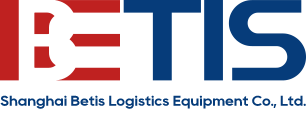Warehouse racking systems are critical to the safe and efficient storage of goods in any facility. However, over time, wear and tear, environmental factors, and human error can cause significant damage to racking structures. Regular inspections are necessary to identify potential hazards before they lead to accidents, costly repairs, or even structural failure. Conducting proper warehouse racking inspections not only helps ensure compliance with safety regulations but also extends the lifespan of the racking system.
A thorough warehouse racking inspection involves several key components, each of which plays a critical role in ensuring the system’s integrity. The following areas should be covered during any inspection:
Inspecting the overall structure of the racks is the first step. Look for any visible signs of damage such as bending, warping, or leaning racks. It’s important to check the uprights, beams, and cross braces for any structural weakness. Any significant deformation can compromise the stability of the entire system.
Every racking system has a specified load capacity. Checking that this limit is not exceeded is vital for preventing accidents. Ensure that the racks are properly labeled with load capacity information and that they are not overloaded. The use of weight indicators or load capacity signs is essential in maintaining this part of the inspection.
Inspecting the shelves or decking of the racking system is crucial, as these components support the weight of stored goods. Check for any visible signs of corrosion, cracking, or damage from heavy loads. Wooden pallets or decking materials should be free from splinters, cracks, or other forms of wear that may cause them to fail under pressure.
Bolts, nuts, and other fasteners are integral in keeping the racking system together. Ensure all bolts are tightly secured and show no signs of rust, corrosion, or wear. Loose or missing bolts can be a major hazard, so this part of the inspection should not be overlooked.
Safety should be a top priority during any racking inspection. Warehouse racking systems are often located in high-traffic areas, meaning inspectors need to take precautions to prevent accidents while performing their checks.
Personal protective equipment (PPE) should always be worn during an inspection. Hard hats, steel-toe boots, gloves, and reflective vests are essential for preventing injuries. This is especially important if the inspection involves climbing ladders or scaffolding to reach higher racking levels.
Use the correct tools to check the structural integrity of the racking system. This might include torque wrenches to check bolt tightness or measuring tools to check for any deformations. Don’t rely on your visual inspection alone—tools will help ensure the racking system meets required standards.
Regular inspections are necessary to ensure a safe and compliant warehouse environment. The frequency of inspections can vary depending on the type of racking system, the volume of use, and environmental conditions. However, a general guideline suggests:
It is essential to document every inspection, including the date, findings, and actions taken. These records are not only valuable for internal tracking but also for compliance with safety regulations.
Conducting regular warehouse racking inspections is vital for maintaining a safe, efficient, and compliant warehouse. By focusing on key inspection areas like structural integrity, load capacity, and the condition of fasteners, operators can reduce the risk of accidents and costly repairs. Always prioritize safety during inspections, and make sure to document every check to stay compliant with regulations. A proactive approach to racking maintenance not only ensures the safety of employees but also extends the lifespan of your racking system.
